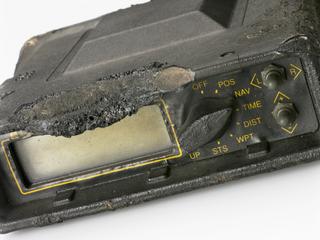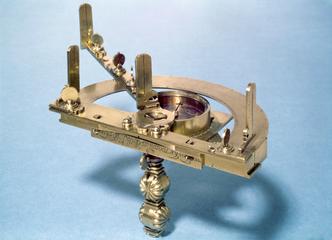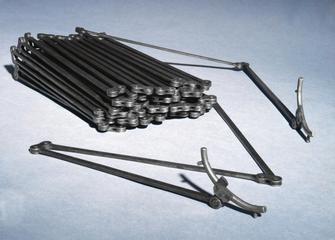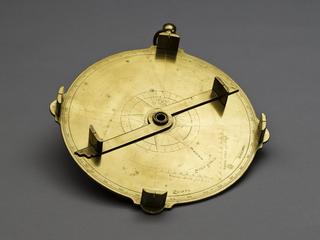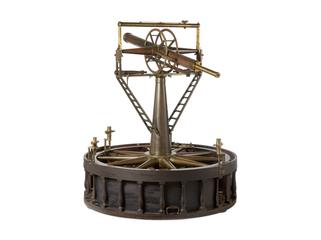
Simple theodolite, German, c. 1596
- Made:
- circa 1596 in Germany

Small simple theodolite with fixed and moveable sights, German, c. 1596. The degree scale within the compass enables measurements of bearings, and the one on the base plate measures angles of elevation.
This compact instrument of practical design was intended for surveying in the field. Its two separate scales enabled its user to measure both horizontal and vertical angles by changing the orientation of the instrument. Individual degrees are only marked on one half of each circle, with the other half only marked in 5-degree intervals. This was probably to save time during manufacture, as hand-dividing angular scales was a time-consuming and laborious process – and would have helped reduce the cost of the instrument to its eventual user.
There is no maker’s mark, but based upon the cardinal compass points (N for ‘Nord’, O for ‘Ost’, S for ‘Süd’ and W for ‘West’) the instrument was made in the German-speaking lands – most likely Nuremburg or Augsburg. The proposed date of manufacture is based upon the discrepancy between true and magnetic north, as marked upon the compass face; in Nuremburg, magnetic declination at Nuremburg was about 10 degrees east of north around 1596.
Details
- Category:
- Surveying
- Object Number:
- 1918-124
- Materials:
- brass, iron, needle and glass
- Measurements:
-
overall: 110 mm,
- type:
- simple theodolite
- credit:
- Court, Thomas Henry
